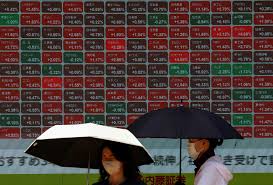Oil prices held on to last week’s gains early on Monday as investors waited for U.S.-China trade talks to be held in London later in the day.
Brent crude futures were flat at $66.47 a barrel at 0008 GMT. U.S. West Texas Intermediate crude was trading up 1 cent at $64.59, according to Reuters.
This is even as dollar held steady against all major currencies on Monday, as exuberance over an upbeat U.S. employment report gave way to caution ahead of pivotal U.S.-China trade talks.
The talks come at a crucial time for both economies, with China grappling with deflation and trade uncertainty dampening sentiment among U.S. businesses and consumers, prompting investors to reassess the dollar’s safe-haven status.
Treasury Secretary Scott Bessent, Commerce Secretary Howard Lutnick and Trade Representative Jamieson Greer are expected to represent the U.S. at the trade talks, while vice premier He Lifeng would likely be present with the Chinese delegation.
“A deal to keep talking might be better than nothing, but unless we see a concrete breakthrough, the impact on sentiment is likely to remain muted,” said Charu Chanana, chief investment strategist at Saxo Markets.
However, the prospect of the U.S.-China trade deal has supported prices.
The announcement on Saturday followed a rare Thursday call between the two countries’ top leaders, with both under pressure to dial down tensions as China’s export controls on rare earths disrupt global supply chains. Oil prices posted their first weekly gain in three weeks on the news.
A U.S. jobs report showing unemployment held steady in May appeared to increase the odds of a Federal Reserve interest rate cut, further supporting last week’s gains.
Inflation data from China on Monday morning will give a reading of domestic demand in the world’s largest crude importer.
READ ALSO:Oil Prices Head For Rebound As US-China Trade Talks Resume
The economic data and the prospect of a trade deal that could support economic growth and increase demand for oil outweighed worries about increased OPEC+ supply after the group announced another big output hike for July on May 31.
HSBC expects OPEC+ to accelerate supply hikes in August and September, which are likely to raise downside risks to the bank’s $65 per barrel Brent forecast from the fourth quarter of 2025, according to a research note on Friday.
Capital Economics researchers said they believe this “new faster pace of (OPEC+) production rises is here to stay”.
Also, Friday’s upbeat U.S. jobs report yielded some relief for investors following other bleak economic data last week.
The dollar advanced against major peers after the employment report, which cut weekly declines in the dollar index by more than half. However, it is still down by more than 8.6% for the year.
On Monday, the yen firmed 0.10% at 144.750 per dollar, as data showed Japan’s economy contracted at a slower-than-expected pace in the January-March period.
The Swiss franc was steady at 0.8221 per dollar by 0041 GMT. The euro was last flat at $1.1399, while the sterling fetched $1.3535.
The dollar index, which measures the U.S. currency against six others, was steady at 99.169. The yield on 10-year Treasury notes was flat in early Asia trading, after a more than 10 basis points jump on Friday.
Advertisement · Scroll to continue
New Zealand’s dollar last bought $0.6020, while the Australian dollar inched up 0.1% at $0.65 in light volumes as markets were closed for a public holiday.
An inflation report out of the U.S. for the month of May will be in the spotlight later in the week as investors and Federal Reserve policymakers look for evidence on the damage trade restrictive policies have had on the economy.
Fed officials are in a blackout period ahead of their policy meeting next week, but they have signalled that they are in no rush to cut interest rates and signs of better-than-feared economic resilience are likely to further cement their stance.
Interest rate futures indicate that investors are anticipating the central bank may cut borrowing costs by 25 basis points, with the earliest move expected in October this year, according to data compiled by LSEG.
“May is the first month where the impact of Trump’s 10% universal tariff on imports ex-USMCA is expected to show. The Fed will want a few months of inflation data in order to judge the tariff impact and most importantly, its persistence,” analysts at ANZ Bank said.
Elsewhere, China’s offshore yuan was last at 7.187 per dollar ahead of inflation and trade data.













